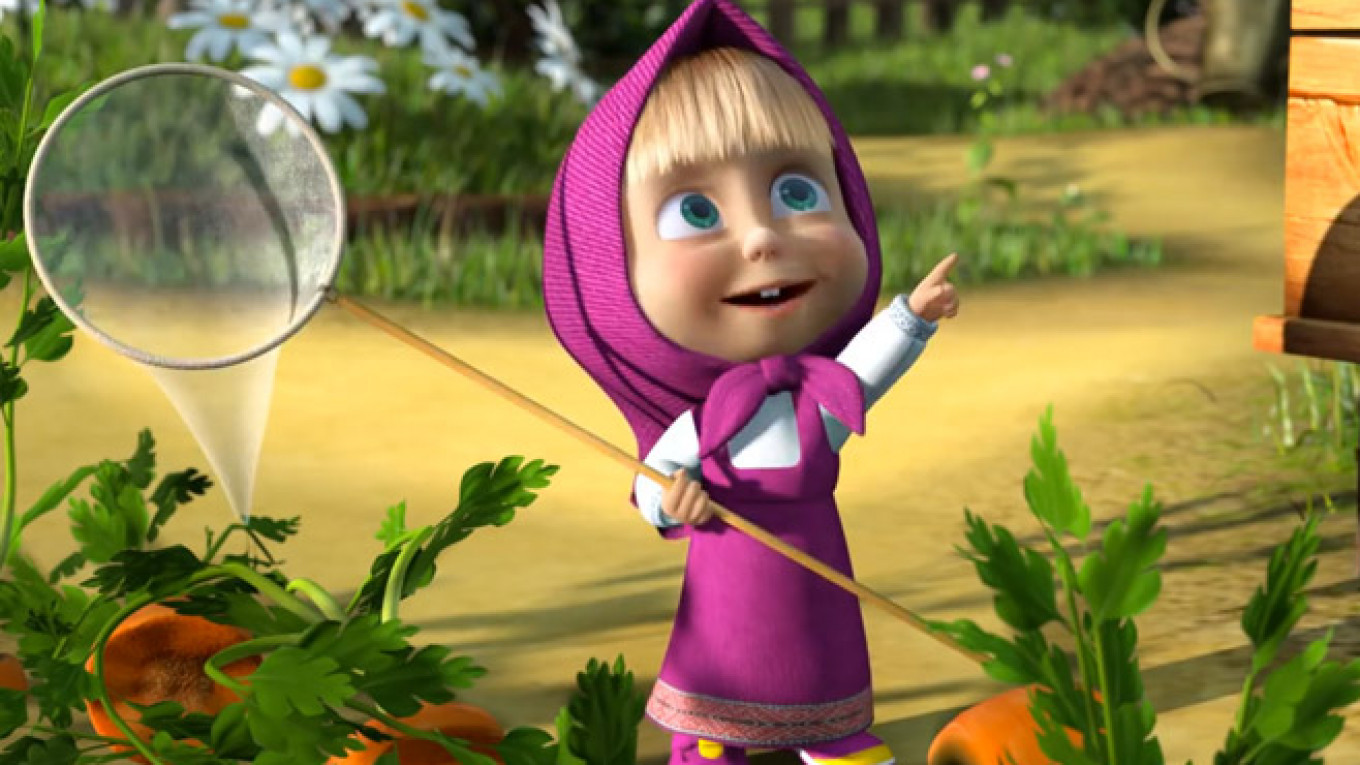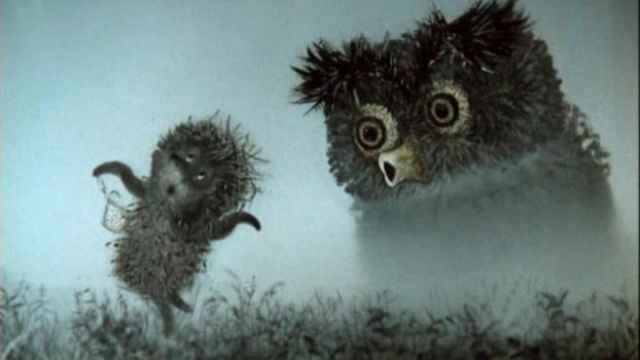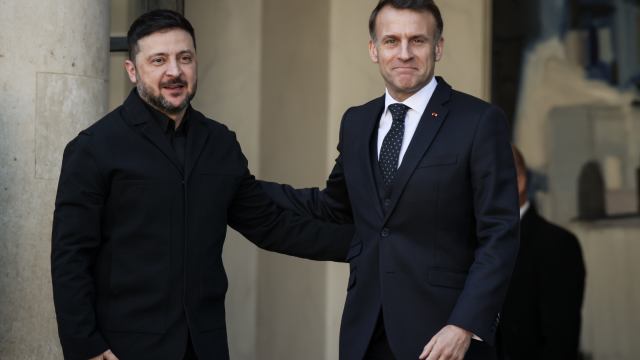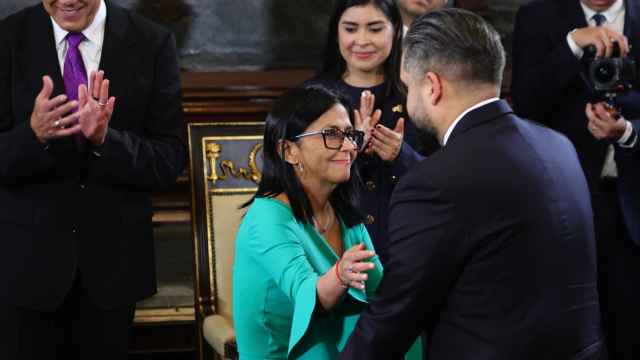An influx of state cash and some breakthrough projects are pulling Russian animation back from its near-collapse in the 1990s and toward a revival of its Soviet heyday.
Soviet cartoons were one of communist Russia's most famous cultural products, but the arrival of capitalism gutted the animation industry. Now, under President Vladimir Putin, Russian animation is receiving state support as part of a project to reassert Russian cultural identity against foreign influence.
"Over the last five years, the production budget of Russian animation has doubled," Irina Mastusova, executive director of the Russian Animated Film Association, told The Moscow Times
Kind-Hearted Bear
Symbolizing the breakthrough is "Masha and the Bear." The cartoon, in which a small Russian girl with big green eye tests the patience of an exasperated but kind-hearted bear, has become a global brand, recognized by 80 percent of 7-year-old girls in Indonesia, 50 percent of 7-year-old girls in Denmark and Italy, and 40 percent of them in China, according to Animaccord, the studio that makes "Masha and the Bear."
The cartoon's YouTube channel has racked up over 58 million views and earns up to half a million dollars per year, data from SocialBlade, YouTube's official public statistics source, shows.
And that income is dwarfed by global sales of merchandise, including schoolbags, umbrellas, toys, cosmetics, food and puzzles.
"Seventy percent of our license profit comes from merchandise, 30 percent from digital media and television," the cartoon's co-producer, Dmitry Loveyko, told The Moscow Times in Animaccord's Moscow studios.
Saving the Industry
Animaccord consists of about 50 animators, who produce 10 seven-minute episodes of "Masha and the Bear" a year. Each minute of animation costs the studio around $20,000.
For an industry that was once on the verge of death, such budgets are extraordinary.
The biggest Soviet studio, Soyuzmultfilm, founded in 1936, produced in its best years famous animations such as "Hedgehog in the Fog" (1975), "Winnie-the-Pooh" (1969), "Nu, pogodi" (1969), and "Cheburashka" (1971). The studio's output collapsed during Soviet perestroika in the 1980s. The fall of communism in 1991 left it on the edge of bankruptcy.
When Russian animator Oleg Kuzovkov came up with the idea for "Masha and the Bear" in 1996, there was simply no market for it. Production of the cartoon began only in 2007.
"The significant step forward," as Mastusova called it, happened when a group of Russian animators, including the creator of "Hedgehog in the Fog," Yury Norshtein, met with Putin in 2011.
At the meeting, then-Prime Minister Putin said that while the Soviet Union had produced up to 400 animated hours per year, in the 2000s, Russia's yearly output fell to around 20 hours.
That encounter created a program to save animation that formed the Russian Animated Film Association, a noncommercial partnership set up to consolidate and the animation industry and help to lobby for state funding.
Despite the commercial success of "Masha and the Bear," Animaccord, like all animation studios in Russia, receives state funding through direct subsidies and interest-free loans from the Cinema Fund, a state agency that controls the purse stings of Russian film subsidies.
"Animation in Russia would not survive without state funding, because the production costs are extremely high," said the association's Mastusova.
Russian Animation, Scottish Voices
Another big studio, Wizart Animation, recently requested 400 million rubles ($8 million) from the Cinema Fund to create a third film of its franchise "The Snow Queen."
The first "Snow Queen" was released in 2012 and grossed $12 million worldwide in 80 countries. "Snow Queen" will be shown this year in Japan, Indonesia, Philippines, South Africa and on 3,000 screens in China.
Wizart Animation's ambitions, like Animaccord's, are global. The studio's 250 animators are based in Voronezh, but part of production is done abroad. To target a worldwide audience, the original sound for the Snow Queen project is recorded in English on location in Scotland, said Vladimir Nikolayev, Wizart's executive producer.
American singer Bella Thorne performs on the soundtrack for the Russian franchise and the music was composed by an Emmy Award-winning American composer Mark Willott.
But though the "Snow Queen" films have some of the biggest budgets in Russia, they pale in comparison to the United States, where animated films often have budgets of more than $100 million.
Ideological Messaging
To gain access to funding, a studio hands over a script, which must be approved by the Cinema Fund's expert team before cash is allocated.
Last year the Cinema Fund gave 1.3 billion rubles ($26 million) to 26 projects, eight of which were animated, according the Russian Animated Film Association's website.
Among the chosen projects was a 3-D animated film, "Sergei Radonezhsky," based on life of the 14th-century Orthodox monk who blessed Dmitry Donskoi before the prince rode to battle Russia's Tatar rulers.
The choice demonstrates a trend of picking films that promote Russian achievements and values.
In 2010, for example, the state backed "Space Dogs," a film dedicated to the 50 year anniversary of the Soviet space flight of dogs Belka and Strelka.
Putin, in his 2011 meeting with animators, said he loved Russian cartoons. "Everything there is kindness, [about] the battle with evil, [about] faithfulness, truth — it is all in our animation," he said.
Most Soviet and Russian animations are based on old Russian fairy tales, where good always conquers evil.
Generations of Russians can quote a phrase from the Soviet cartoon "Leopold the Cat" (1975), in which the cat constantly exclaims: "Folks! Let's live in peace!" They contrast this with the serial humiliations wreaked on Tom the cat by Jerry the mouse in the U.S. cartoon "Tom and Jerry."
The Best Fur
State funding also aims to shift educational standards for Russian animators. At a time when in the 1990s 3-D animation was emerging in the West, post-Soviet Russia had only old-school animators using "wet technology" — shooting hand-painted drawings and manually developing film.
Now all you need is a computer with animation software. Sergei Martinov, head of production at the Animaccord studio, told The Moscow Times that his studio had spent two years developing software and programs to better depict bear fur.
Many companies are training their own professionals. Yelena Boyarskaya is deputy director of the Melnitsa studio in St. Petersburg, which is famous for "Luntik," an animated program about a four-eared pink creature who fell to earth from the moon. The program has amassed 2 billion views on YouTube since its launch in 2007. She said, "Every year we organize courses: artists with diplomas study here for free for two months."
In 2013, Melnitsa earned $31.5 million at the box office — a record for Russian animation — with the film "Three Warriors on Far Shores," about the adventures of three Russian folk heros from Kievan Rus — Alyosha Popovich, Dobrynya Nikitich and Ilya Muromets.
When The Moscow Times visited Animaccord, senior animator Alexander Goncharov was gathering a 3-D "library of poses" of a new character for the "Masha and the Bear" — a frog.
Contact the author at [email protected]
A Message from The Moscow Times:
Dear readers,
We are facing unprecedented challenges. Russia's Prosecutor General's Office has designated The Moscow Times as an "undesirable" organization, criminalizing our work and putting our staff at risk of prosecution. This follows our earlier unjust labeling as a "foreign agent."
These actions are direct attempts to silence independent journalism in Russia. The authorities claim our work "discredits the decisions of the Russian leadership." We see things differently: we strive to provide accurate, unbiased reporting on Russia.
We, the journalists of The Moscow Times, refuse to be silenced. But to continue our work, we need your help.
Your support, no matter how small, makes a world of difference. If you can, please support us monthly starting from just $2. It's quick to set up, and every contribution makes a significant impact.
By supporting The Moscow Times, you're defending open, independent journalism in the face of repression. Thank you for standing with us.
Remind me later.






